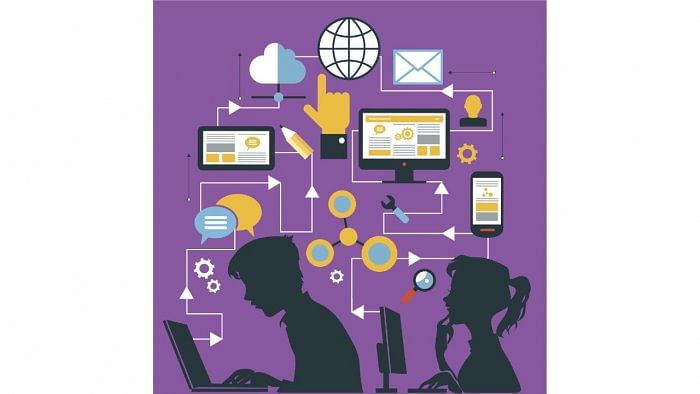
It’s a hot and sultry afternoon in the tiny city of Nellore in Andhra Pradesh. Shanthi Reddy, aged 35, is a social worker who works in an informal settlement. As she stands next to the open drain running through her shantytown, a sense of pride comes over her. A few days prior, two people in the neighbourhood had died by drowning when the blocked drain overflowed and caused a flood. She quickly used a mobile app to submit her grievance, and with- in eight hours, the drain blockage was fixed, preventing further calamities.
Currently, 70 per cent of GDP comes from cities. Every two minutes, a person moves to a big city. Therefore, the availability of basic services and amenities connecting citizens with local governance is crucial. Good governance is a necessary step towards truly meeting people’s aspirations for a high quality of life. Technology provides citizens with transparent, accessible, and accountable governance.
The challenges of urban governance have been amplified by the rapid growth of cities. However, public digital platforms create an enabling environment for urban transformation at scale and speed. They dramatically improve the quality and accountability of public services and facilitate citizen-centric governance. With the rapid rise in digital connectivity and user-centric platforms, Indian citizens expect to receive swift, on-demand, and transparent services anytime, anywhere.
Technology can also transform the experience of the citizen, providing transparency and visibility into how their requests are being processed, with clear indications of how much progress has been made and what remains to be done.
The advantage of a public and societal platform lies in its ability to convene the different players who form this ecosystem, to streamline and amplify their efforts, and to connect them to a broader community of problem-solvers across the country.
One of the biggest successes of digitisation is actually taking the drudgery out of employees’ hands and helping them enter the 21st century. Technology speeds up the process. Whether online or at the counter, the time spent per transaction is much lower, thus saving precious time for both the government official and the citizen.
The most significant consequence of digitisation is the development of citizen trust in their government. One could compare this to the increasing confidence demonstrated by rural citizens in popular e-commerce platforms, a stark difference from the previous dependence on face-to-face transactions.
From the point of view of governance and municipal services, digitization not only simplifies activities such as the payment of taxes and getting new water connections for citizens but also the mapping and monitoring of the facilities by the government. In a digitised economy, it is possible to remove the friction between government and citizens.
Challenges
It is true that in a country as large as India, digitisation could take place in silos, leading to duplication of effort. Streamlining a paper-and-pencil process can be a daunting task for both service providers and citizens. With the backend technology being undoubtedly complicated, keeping user interfaces as simple as possible for customers can be quite challenging.
Technological innovations notwithstanding, Indian citizens still want their options open. We often see families taking a day off to go pay their bills and using the time to spend together as a unit. In a democratic setting such as India, the people cannot be forced to use an app or website. They simply might not have the capacity to do so. Thus, the government’s provision of multiple modes of citizen communication is an absolute must.
Given the way India happens to be, which is a quirky, complex mix of traditional methods and state-of-the-art technological advancement, imposing new and innovative sensibilities on its citizens might not be the best way forward.
While the provision of e-governance services via a multitude of e-platforms such as mobile apps, websites, etc., is for sure the way of the future, the decision on which mode of communication is to be selected ultimately rests with the citizens themselves. Certain sections might prefer old-fashioned, in-person communication, while others, like Shanthi, might be comfortable with online transactions. Thus, the provision and ease of accessibility of government services via a multitude of traditional and novel communication options, all of which provide similar experiences and outcomes for citizens, are essential.
(The writer is CEO, e-Gov Foundation)